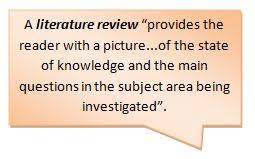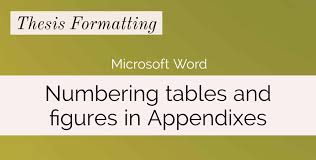WRITING A MASTERS DISSERTATION
INTRODUCTION
Dissertation /Thesis is the last phase of a postgraduate program and offers you a chance to demonstrate that you have the requisite skills and understanding to initiate and conduct a research through Masters Dissertation writing. It should prove your ability to identify a research topic in a relevant study area. It involves formulation of research objectives; identifying, consolidating and analytically exploring pertinent secondary information and credible sources; developing a suitable methodology; evaluating the primary data and reviewing the sources on the research area; making conclusions; and where necessary, making recommendations on areas for additional study.
Table of Contents
- INTRODUCTION
- THE DISSERTATION
- THE RESEARCH PROPOSAL
- (a) An operational title
- An Introduction to the Topic
- WRITING THE DISSERTATION
- TITLE PAGE
- ABSTRACT
- Contents Page
- Introduction
Table of Contents
- The background of the research
- The reasons for conducting the research
- LITERATURE REVIEW
- RESEARCH METHODOLOGY
- FINDINGS / RESULTS / DATA ANALYSIS
- DISCUSSION
- CONCLUSIONS
- REFERENCES
- APPENDICES

THE DISSERTATION
THE RESEARCH PROPOSAL
The research proposal is a critical part of your masters dissertation writing which should in the end be converted into a dissertation a few months into the research. It is an exhaustive framework of the whole dissertation.
The proposal should contain:

(a) An operational title
b) An Introduction to the Topic
The study aim describes what you intend to achieve by conducting the research.
The objectives summarizes specific concerns that interventions should zero in to realize research aim.
The research questions are more precise in comparison to study objectives and identify the different sets of data that should be gathered to realize the objectives. Remember that the research question should focus on Why, How, or what of the study.
(c) An Introductory Review of relevant literature on study variables
(d) Comprehensive Research Methodology
(e) A Schedule
- A Schedule stipulating how you expect to beat the dissertation
WRITING THE DISSERTATION:
TITLE PAGE
The title pf your masters dissertation is a concise statement containing dependent variables and independent variables:

ABSTRACT
An abstract is short summary of study findings. It is a concise representation of the outcomes, and provides the reader with a synopsis of the entire document.
An effective abstract in a masters dissertation writing should contain:
- Aim and objectives: What are the key areas, concepts or concerns of theory under investigation?
- Boundaries: What is the setting and perspectives that will impact the dissertation? What aspects of theory or real-world application the reader should focus on.
- Methodology: What were the key method(s) used to meet research objectives?
- Results: What were the key outcomes?
- Conclusions: What are the major deductions of the dissertation?
- Recommendations: Where necessary, what solutions are advanced in response issues identified in the study objectives
Contents Page
The section should include chapter headings, appendices, references and their page numbers. Lists of figures, tables and abbreviations should be listed separately.
Introduction
Your dissertation should be arranged in chapters and sections suitable for the topic and nature of dissertation.
The Introduction should set provide the context of the research and answer questions regarding the following:
The background of the research
- What is the context, the situation in which the research was conducted?
- Why is this issue worth researching?
- Who are the main participants or respondents in the research?
- Are there noteworthy patterns or fundamental variables which should catch the reader’s eye?
- A clear and brief declaration of study aims and objectives to be met by the research.
The reasons for conducting the research
- Was this research carried out to test certain areas of interest (practice or theory or framework of analysis)?
- Was the research conducted to meet the needs of a business entity?
LITERATURE REVIEW
Should be guided by an inclusion criteria (or exclusion criteria) of literature and should aim:

Inclusion Criteria
- To provide and to critically evaluate, pertinent portion(s) of extant works to promote in depth appreciation of background and setting of the study. This is essential for creating detailed awareness of the Masters Dissertation writing process. Critical analysis should not merely be a negative assessment of the literature but an evaluation of entire works.
- To serve as a background from which the rest of the dissertation might be examined and analytically reviewed to help the reader to gauge the value the Dissertation, research and reporting abilities.
- To demonstrate to go beyond discovery and reporting facts from pertinent publications, but to prove that you internalized and can critically analyze
- To demonstrate that you have sufficient understanding of research area to identify gaps; thus giving justification for the research.
- To prove that you understand what the critical variables are, patterns, and participants in the study settings. In other words, you should demonstrate awareness of main issues being researched.
- To improve capacity of readers to determine the validity of research instrument, specific research methodology, suitability of data analysis procedures, and if study outcomes are consistent with the previous research.
The literature review should be written as synopsis, a categorization, evaluation and a critical analysis of literature suitable giving a detailed knowledge of your area of research. Sources for literature review can be a collection of books, journals, conference proceedings, reports, and case studies, the Internet, or newspapers.
Do not forget, however, that the most recommended source for academic papers are journals. As such, you should make sure that you are conversant with the latest sources in your area of research for your Masters Dissertation.
Moreover, ensure that your literature review is connected to and validate research objectives and research questions. Your literature review should not merely be a compilation of academic works, frameworks, outlines, and thoughts. Rather, it should be a critical analysis of extant literature.
RESEARCH METHODOLOGY
The Methodology chapter should be started by restating study objectives. The link between the two is essential as it makes it easy for the reader to conduct an evaluation of validity of your preferred research methodology.
Earlier on, we observed that research questions are obtained from literature review. In this chapter, you are expected to explain how your research questions were answered. Simple statements to the effect that participants were chosen by means of a stratified sampling method and charted using focused group discussions should be avoided. While your problem statement may justify your choices of research method, you should still defend your choice nonetheless.
Research methodology especially when applied to the arts, goes beyond method to describe overriding philosophy of the research methods.
This chapter should be concluded by summarizing the key points detailing how the chapter connects with research findings. Remember that the chapter should contain between 1000 and 2000 words.
FINDINGS / RESULTS / DATA ANALYSIS
This chapter of the masters dissertation writing focuses on the proof and/or outcomes of primary research that was carried out. It can be presented as a comprehensive quantitative model, test of hypothesis, analysis of results using simple descriptive statistics or qualitative techniques such as structured content analysis, textual analysis, and case study descriptions.
The crux of the chapter is the presentation of the data. The data should be consistently ordered to demonstrate clarity of thought for easy interpretation.
Irrespective of the preferred data analysis technique, you must present data meticulously without boring the reader with mind-numbing collection of tables, data and figures. It is recommended that you describe your outcomes clearly, and consider only the most relevant information as evidence of findings. However, Dissertations with comprehensive modelling or quantitative analysis should be backed up with underlying assumptions, relationships and methods.
Graphical representation of data through graphs, diagrams, and pie-charts are an effective way of ‘breaking up’ compact chunks of text to put points across. Whether through text or graphics, this chapter should only review findings which are pertinent to the research question.
Also, remember that not every dissertation contains quantitative data. In such instances, qualitative data is preferred. Qualitative analysis should be anchored on the research questions and concerns investigated during data collection. For example, if you explored six key questions in a sequence of interviews, you should evaluate these questions individually, instead of referring to each sample in turn. This is important as it gifts the reader a consistent and coherent development of the chapter. Moreover, it is recommended that you focus on the points of concurrence and divergence observed during data collection. Remember to support your analysis with pertinent excerpts from respondents.
DISCUSSION
During the introduction, you presented the background of the study. In the literature review you examined extant works of experts and academics, and obtained a number of research questions whose answers are needed to meet the objectives of the research. In the third chapter, you discussed the research methodology wherein you presented the research methods at your disposal, their merits and demerits, and the reasons for choosing the method you used. In the results chapter, you present your findings, and/or data analysis.
The Discussion chapter begins with a reiteration of research objectives. It also reminds the reader of your review of the literature on study variables, assessment of various themes, concerns, frameworks, and perspectives and how they aided the development of the research questions. Essentially, analysis of data collected during fieldwork should present answers to the questions. So, ensure that you concentrate on data pertinent to the research questions. Be careful not to present attention-grabbing analyses that do not flow in the overall direction of the Dissertation. Do not forget that the overriding aim of this chapter is to analytically and critically examine primary results making constant reference to theoretical foundations contained in the literature review. You should outline where key parallels and inconsistencies in literature or among various groups lie. In instances where a model or framework of analysis was preferred, remember to highlight the key connections, and explain underlying reasons and justifications for the decisions under discussion.
CONCLUSIONS
In this part of the dissertation writing, you are expected to tie every chapter of the document by demonstrating the manner in which preliminary study plan has been executed. The implementation of the research plan should lead to conclusions derived from the data presented in the dissertation. It is recommended at this stage not to introduce fresh evidence as citations or referencing is not permitted. The conclusion should also include a concise statement. The conclusions should contain a concise declaration indicating the degree to which the aim and specific objectives of the research are met. You should restate the questions guiding your research, and an accompanying statement that plainly explains your knowledge of the questions. The statements contained in the conclusion should not deviate from evidence presented in the previous chapters. In other words, you should avoid making statements that are not validated or corroborated other chapters of the Dissertation.
This chapter should be concluded by including brief subsection containing recommendations for extra research. Remember to include a concise statement on the boundaries of the study.
REFERENCES
All citations and referencing should be done correctly according to the citation style recommended by your supervisor. Whether you have relied on direct quotation or rephrasing of texts, you should acknowledge your sources in a reference list or bibliography, arranged in an alphabetical order.

APPENDICES
While the appendix is optional in some research papers, it is designed to provide supplemental evidence to the analysis conducted in the discussion chapter in your masters dissertation writing. You are free to exercise discretion in the presentation of your appendix. However, it is recommended that your appendix should contain data which proves the authenticity of your work, in addition to clarifying key variables and items in the main document, research instruments (questionnaire, focused group discussions, interviews etc.) and data collection procedures. You should only include additional material in the appendix as do not assume that examiners will not read it in detail.
Grab Your 20% Discount Now, Talk to Us
Day(s)
:
Hour(s)
:
Minute(s)
:
Second(s)

